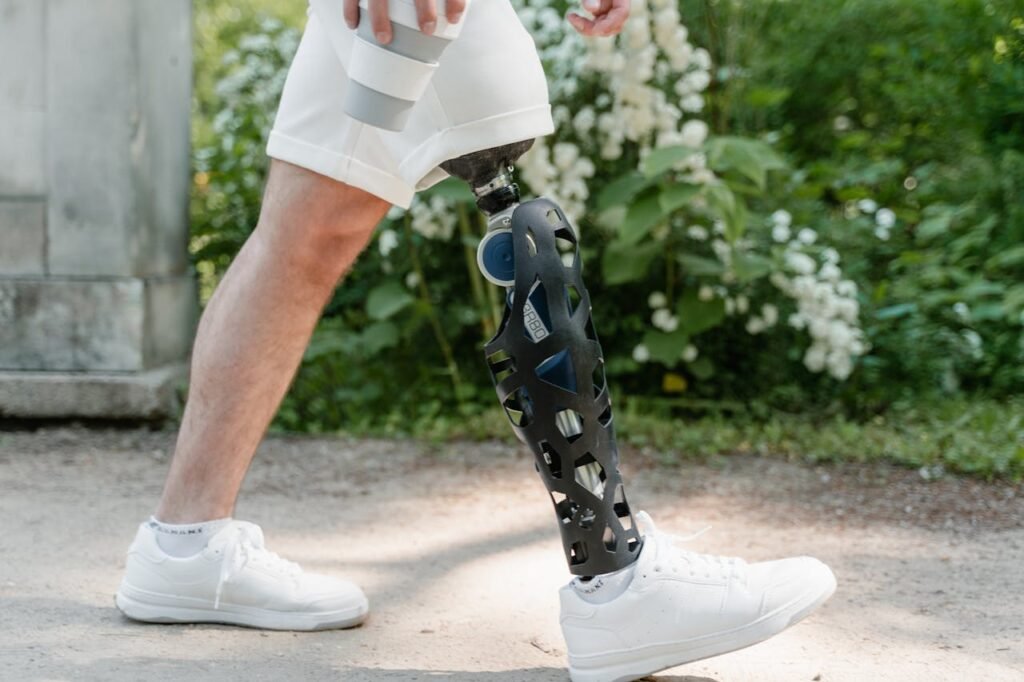When a child needs a prosthetic, parents often face a mix of emotions. You want your child to have the best tools to live a happy and independent life, but the choices can feel overwhelming. There are different types of prosthetics, each designed for specific needs. The right one depends on many factors, from your child’s activity level to their comfort and ease of use. This guide will help you navigate the process step by step, so you can make an informed and confident decision.
Understanding Your Child’s Prosthetic Needs
Every child is different, and so are their prosthetic needs. Some children are born with limb differences, while others may need a prosthetic due to injury or illness. The first step in choosing the right prosthetic is understanding what works best for your child’s daily life.
A child who loves to run, play sports, and climb will need a different prosthetic than one who prefers artistic activities like drawing or music. It’s important to consider their lifestyle and personality. A prosthetic should support their interests rather than limit them.
Your child’s comfort is also key. A prosthetic should fit well and feel natural. If it’s too heavy or difficult to use, your child may not want to wear it. Working with a prosthetist who understands children’s needs will help you find the best fit for your little one.
Types of Prosthetics for Children

There are different types of prosthetics available, and each one serves a unique purpose. Knowing these options will help you make a more informed decision.
Passive Prosthetics
Passive prosthetics are lightweight and mainly used for appearance. They do not have moving parts, but they help restore a natural look. Many children feel more confident wearing a prosthetic that looks like a real hand or leg. These are ideal for children who do not require much functionality but still want a natural appearance.
Passive prosthetics are often made from silicone or plastic. They can be customized to match skin tone and size. Although they do not provide movement, they can still help with balance and simple tasks like holding objects.
These prosthetics require minimal maintenance and are a great option for younger children who are still getting used to wearing a prosthetic. They can also be a stepping stone to more advanced options in the future.
Functional Prosthetics
Functional prosthetics allow movement and can be used for specific activities. These prosthetics can be mechanical or body-powered, where movement is controlled by cables and harnesses. They provide better control and grip strength for daily tasks.
For children who need to hold objects, write, or play, functional prosthetics are a good choice. They are designed to mimic the movement of a natural hand or leg, giving children the ability to perform everyday activities with ease. Some models even come with interchangeable attachments for different tasks.
The durability of functional prosthetics makes them a great option for active children. They can withstand rough play and daily use, helping children feel more independent and capable.
Bionic (Myoelectric) Prosthetics
Bionic prosthetics use electrical signals from muscles to control movement. These advanced prosthetics offer more precise and natural movements compared to mechanical prosthetics. They are ideal for children who need more functionality in their prosthetic limb.
These prosthetics come with sensors that detect muscle signals and translate them into movement. This allows the child to open and close their hand, grasp objects, and even perform delicate movements like picking up small items. They provide a high level of independence and control.
Although they require charging and regular maintenance, bionic prosthetics can be life-changing for children who want a prosthetic that closely mimics the function of a real limb. They help children perform tasks more naturally, improving their confidence and quality of life.
Choosing the Right Fit and Comfort Level
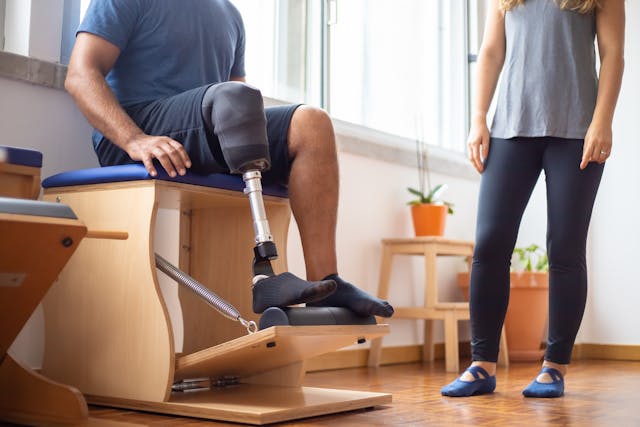
A well-fitting prosthetic makes all the difference in your child’s comfort and confidence. If a prosthetic is too loose, too tight, or uncomfortable, your child may avoid using it, which defeats its purpose.
The first step is working with a skilled prosthetist who understands children’s needs. They will take precise measurements to ensure a snug but comfortable fit. A prosthetic should feel like a natural part of your child’s body, not a burden.
As your child grows, their prosthetic will need adjustments. Regular check-ups will ensure it stays comfortable and functional. It’s important to keep an open dialogue with your child about how the prosthetic feels. If they complain about discomfort, don’t ignore it—small adjustments can make a big difference.
Choosing the Right Fit and Comfort
A prosthetic should feel like a part of the child’s body, not an extra burden. The right fit and comfort are crucial to ensuring they use it regularly without discomfort.
Proper Sizing
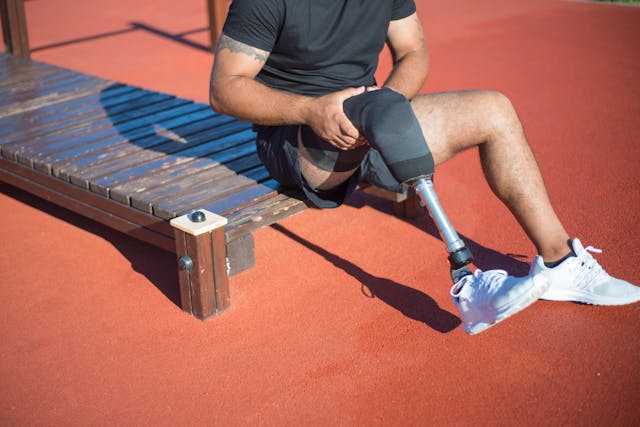
Since children grow quickly, choosing a prosthetic that can be adjusted is important. Working with a prosthetist will help ensure the prosthetic fits properly and does not cause pain. Regular checkups will be needed to make necessary adjustments as your child grows.
If a prosthetic is too tight, it can cause irritation and limit movement. If it is too loose, it may not provide the necessary support. A well-fitted prosthetic will allow the child to move naturally and comfortably throughout the day.
Material and Weight
The material and weight of the prosthetic play a big role in comfort. Lighter materials like carbon fiber and plastic are better for children since they reduce strain on their body. Heavier prosthetics can make movement difficult and cause fatigue.
Choosing soft, skin-friendly liners will help prevent irritation. Some prosthetics come with cushioning to provide extra comfort, especially for children who wear them for long hours.
Ease of Use
A prosthetic should be easy for your child to put on and take off. Complicated designs can frustrate young children, making them less likely to use their prosthetic. Look for options that are simple to wear and adjust.
Children should be able to perform basic tasks independently. A prosthetic that is too complicated may require constant assistance, which can affect their confidence and willingness to use it.
Helping Your Child Adjust to a Prosthetic

Getting used to a prosthetic takes time. Your child may need emotional and physical support as they learn to use it in daily life.
Establishing a Daily Routine
Getting into a consistent routine helps children become more comfortable with their prosthetic. Encourage them to wear it at specific times each day, gradually increasing the duration. Start with simple activities like brushing their teeth or holding a toy, and build up to more complex tasks over time.
Socialization and Peer Support
Engaging with other children who use prosthetics can be extremely helpful. Parents should seek out peer support groups, community events, and online forums where children can interact, share experiences, and feel more included.
Customization for Personalization
Allowing children to personalize their prosthetic with colors, stickers, or designs can make it feel more like their own. This sense of ownership can boost confidence and make them more excited about wearing it.
Encouraging Confidence
Children can feel self-conscious about wearing a prosthetic. Encouraging them to embrace it as a tool that helps them rather than something that sets them apart is important. Support from family, teachers, and friends makes a big difference.
Practicing with Daily Activities
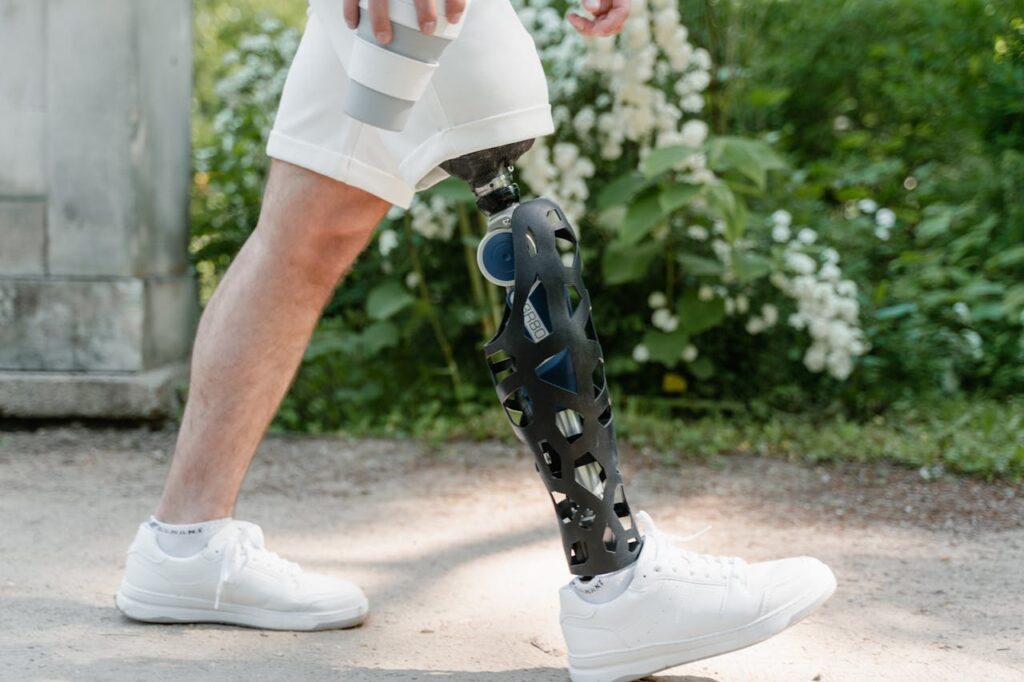
Start with simple tasks like picking up objects or walking on different surfaces. Gamified rehabilitation programs, like those offered by Robobionics, can make learning fun and engaging, helping children adjust faster.
Regular Checkups and Adjustments
Since children are always growing, regular adjustments will be needed to ensure the prosthetic remains comfortable and functional. Visiting a prosthetist for periodic checkups will prevent issues and keep the prosthetic in top shape.
The Importance of Rehabilitation and Training
Rehabilitation plays a crucial role in helping your child adapt to their new prosthetic. Proper training ensures they can use it effectively and comfortably in everyday life.
Therapists often use fun, engaging activities to teach children how to control their prosthetics. Gamified rehabilitation, like the programs offered by Robobionics, makes learning enjoyable and encourages consistent use. These interactive exercises help children build confidence while developing essential skills.
Rehabilitation also prevents long-term issues like muscle weakness or posture problems. A structured program ensures your child’s body adjusts correctly, promoting a natural and comfortable movement pattern.
Advanced Rehabilitation Techniques
Physical Therapy Sessions
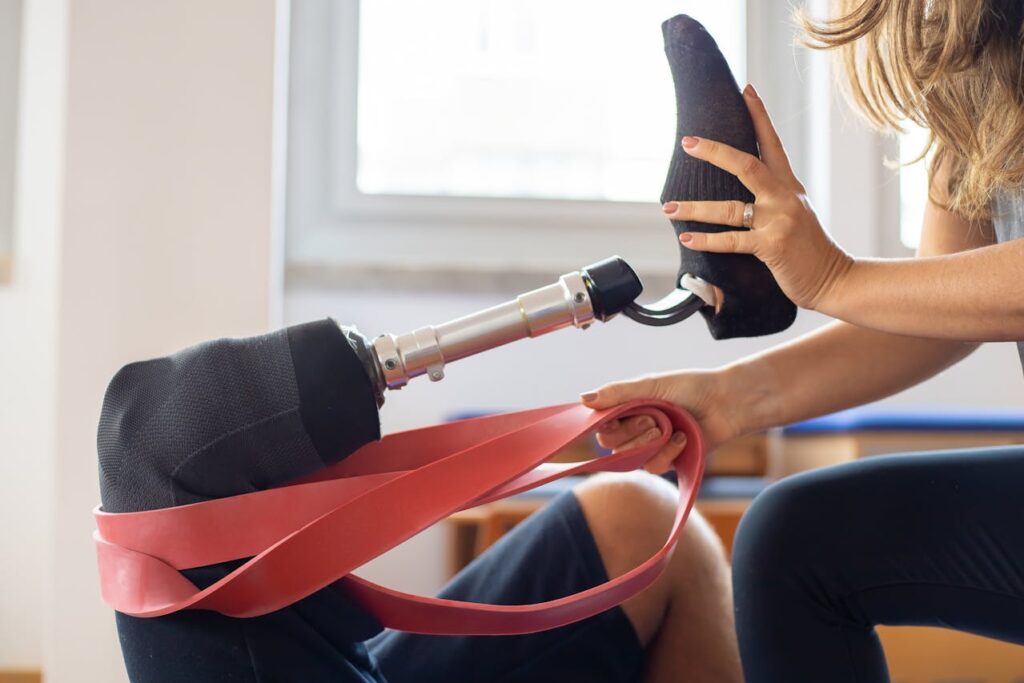
Regular therapy sessions with a professional can help children learn to use their prosthetic effectively. Businesses should consider partnering with rehabilitation centers to provide structured training programs.
Adaptive Sports and Activities
Encouraging participation in adaptive sports can help children improve coordination and confidence. Look for local sports programs designed for children with prosthetics.
Augmented Reality (AR) Training
AR-based training programs can simulate real-life scenarios and help children practice using their prosthetic in different situations, making the learning process engaging and interactive.
Maintenance and Care for Longevity
To keep a prosthetic in good condition, regular maintenance is essential. A well-cared-for prosthetic will last longer and function better, reducing the need for frequent replacements.
Daily cleaning is a simple but effective way to keep the prosthetic hygienic and free of irritants. Check for any signs of wear and tear, such as cracks or loose parts, and address them immediately. Robobionics provides local repair and maintenance services, ensuring faster and more reliable support compared to imported alternatives.
Encouraging your child to take part in caring for their prosthetic will help them feel responsible and independent. Teaching them simple steps, like wiping it down daily and checking for issues, can make a big difference in its longevity.
Psychological and Emotional Well-Being
Building Self-Esteem
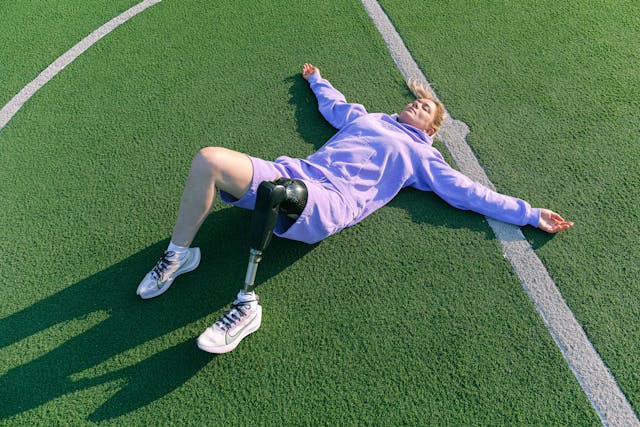
Encourage children to view their prosthetic as a strength rather than a limitation. Positive reinforcement and celebrating small milestones can help them gain confidence.
Addressing Anxiety and Fears
Some children may fear being different. Open discussions, counseling, and exposure to positive role models with prosthetics can help them overcome anxiety.
Family and Community Support
A strong support system is crucial. Parents, teachers, and friends should provide emotional encouragement to ensure the child feels accepted and valued.
Finding the Right Prosthetics Provider
Choosing the right prosthetic provider is just as important as selecting the prosthetic itself. A good provider will guide you through the entire process, from selection to ongoing care.
Look for a provider with experience in pediatric prosthetics, like Robobionics. A specialized team understands the unique needs of growing children and provides solutions tailored to their lifestyle. They should also offer trial periods and rehabilitation support to ensure your child gets the best possible experience.
Transparency and communication matter. A reputable provider will take the time to answer your questions and ensure you feel confident in your decision. Investing in a quality prosthetic from a trusted provider ensures long-term comfort and usability.
Conclusion: Empowering Your Child for a Brighter Future
Choosing the right prosthetic for your child is a big decision, but with the right information and support, you can make a choice that enhances their life. A well-fitted, comfortable prosthetic allows your child to explore, play, and grow with confidence.
At Robobionics, we are committed to helping families find the best solutions for their children. Our innovative prosthetics, including Grippy™, provide lightweight, ergonomic, and highly functional options designed to support every child’s journey.
If you’re ready to take the next step, book a free demo with us today. Let’s work together to give your child the freedom and independence they deserve!



